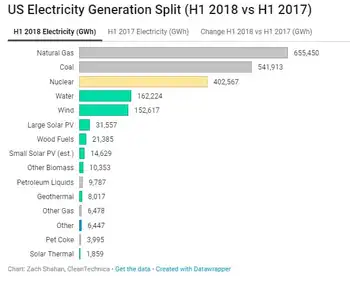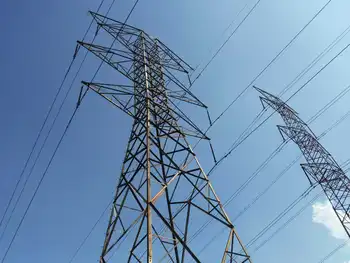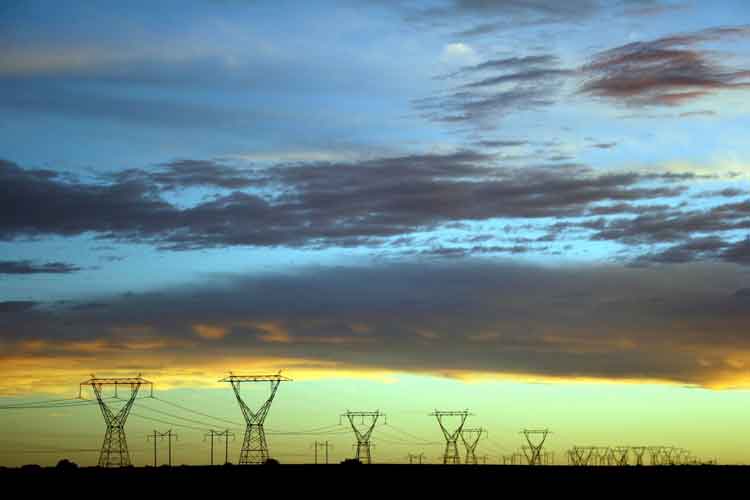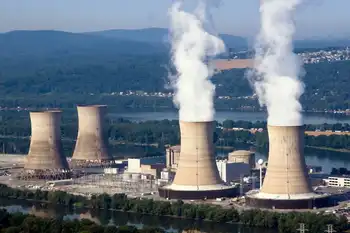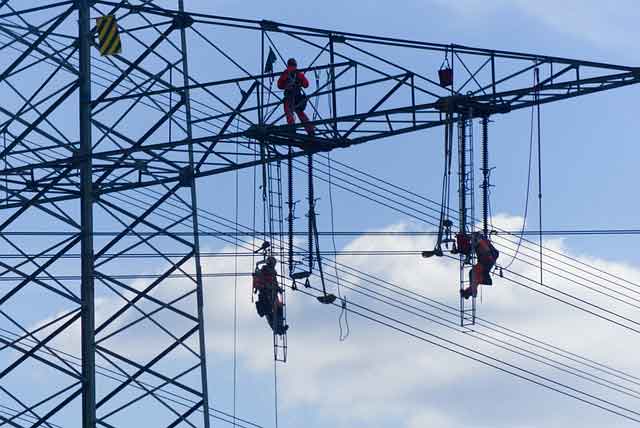Coal dependency hits environment
By Newsday
Arc Flash Training CSA Z462 - Electrical Safety Essentials
Our customized live online or in‑person group training can be delivered to your staff at your location.

- Live Online
- 6 hours Instructor-led
- Group Training Available
It shows up as mercury in the bass and trout caught in Oregon's Willamette River. It increases cloud cover and raises ozone levels. And along the way, it contributes to acid rain in Japan and South Korea and health problems everywhere from Taiyuan to the United States.
This is the dark side of the world's growing use of coal.
Cheap and abundant, coal has become the fuel of choice in much of the world, powering economic booms in China and India that have lifted millions of people out of poverty. Worldwide demand is projected to rise by about 60 percent through 2030 to 6.9 billion tons a year, most of it going to electrical power plants.
But the growth of coal-burning is also contributing to global warming, and is linked to environmental and health issues including acid rain and asthma. Air pollution kills more than 2 million people prematurely, according to the World Health Organization.
"Hands down, coal is by far the dirtiest pollutant," said Dan Jaffe, an atmospheric scientist at the University of Washington who has detected pollutants from Asia at monitoring sites on Mount Bachelor in Oregon and Cheeka Peak in Washington state. "It is a pretty bad fuel on all scores."
To understand the conflict over coal, look at Taiyuan and the surrounding Shanxi Province, the country's top coal-producing region - and one of its most polluted.
Almost overnight, coal has turned poor farmers in this city of 3 million people into Mercedes-driving millionaires, known derisively as "baofahu" or the quick rich. Flashy hotels display chunks of coal in the lobby, and sprawling malls advertise designer goods from Versace and Karl Lagerfeld. Real estate prices have doubled, residents say, and construction cranes fill the skyline.
A museum in Taiyuan celebrates all things coal. Amid photos of smiling miners, coal is presented as the foundation of the country's economic development, credited with making possible everything from the railroad to skin care products.
"Today, coal has penetrated into every aspect of people's lives," the museum says in one of many cheery pronouncements. "We can't live comfortably without coal."
Yet the cornstalks lining a highway outside the city 254 miles southwest of Beijing are covered in soot. The same soot settles on vegetables sold at the roadside, and the thick, acrid smoke blots out the morning sun. At its worst, the haze forces highway closures and flight delays.
With pressure to clean up major cities such as Shanghai and Beijing, particularly in the run-up to next year's Beijing Olympics, the central government is turning increasingly to provinces such as Shanxi to meet the country's power demands.
"They look at polluted places like Taiyuan and say it's so polluted there so it doesn't matter if they have another five power plants," said Ramanan Laxminarayan, a senior fellow at Resources For the Future, an American think tank that found links between air pollution and rising hospital admissions in Taiyuan.
"I visited these power plants and there is no concept of pollution control," he said. "They sort of had a laugh and asked, 'Why would you expect us to install pollution control equipment?'"
China is home to 20 of the world's 30 most polluted cities, according to a World Bank report.
Health costs related to air pollution total $68 billion a year, nearly 4 percent of the country's economic output, the report said. And acid rain has contaminated a third of the country, Sheng Huaren, a senior Chinese parliamentary official, said last year. It is said to destroy some $4 billion worth of crops every year.
"What we are facing in China is enormous economic growth, and... China is paying a price for it," said Henk Bekedam, the country representative for the World Health Organization. "Their growth is not sustainable from an environmental perspective. The good news is that they realize it. The bad news is they're dependent on coal as an energy source."
But the costs go far beyond China. The soot from power plants boosts global warming because coal emits almost twice as much carbon dioxide as natural gas. And researchers from Texas A&M University found that air pollution from China and India has increased in cloud cover and major Pacific Ocean storms by 20 percent to 50 percent over the past 20 years.
"We know dust from factories in China, India, Mexico and Africa does not simply disappear; the wind brings it here," said the U.S. Chamber of Commerce's Bill Kovacs.
Kovacs said overseas dust is adding to the number of counties that do not qualify for federal transportation funds because they are out of compliance with ozone standards. More than 100 counties do not meet the limit of 84 parts per billion. China alone contributes 3 to 5 parts per billion, estimates Daniel J. Jacob, professor of atmospheric chemistry and environmental engineering at Harvard University.
Mercury, a byproduct of some coal-mining, is another major concern. The potent toxin falls into waterways and shows up in fish. Asia's contribution to U.S. mercury levels has shot up over the past 20 years. Jacob estimated half of the mercury in the United States comes from overseas, especially China.
"It's a global problem and right now China is a source on the rise," he said. "If we want to bring down mercury levels in fish, then we have to go after emissions in East Asia."
A fifth of the mercury in the Willamette River came from China and other foreign sources, said Bruce K. Hope of the Oregon Department of Environmental Quality. Pregnant or nursing women who eat the fish put their babies at risk of neurological damage.
"It's frustrating to realize that part of your problem is someone else's behavior and you can't really go to them and say, 'Can you do something different?'" Hope said.
China has closed some polluting factories and says it will retire 50 gigawatts of inefficient power plants, or 8 percent of the total power grid, by 2010, according to the Pew Center for Global Climate Change. The government has also mandated that solar, wind, hydroelectric and other forms of renewable energy provide 10 percent of the nation's power by 2010, and ordered key industries to reduce energy consumption by 20 percent.
President Hu Jintao, in a speech to a key party congress last month, promised a cleanup. But China has fallen short of its national targets for using energy more efficiently, and coal remains a major energy source.
"Everyone knows coal is dirty, but there is no way that China can get rid of coal," the World Bank's Zhao Jianping said in Beijing. "It must rely on it for years to come, until humans can find a new magic solution."
Robert N. Schock, the director of studies for the World Energy Council, agreed that coal, cheap and abundant, will remain a crucial source of energy for many years and be crucial to improving living standards in developing countries.
"Twenty-five percent of the world's electric power is now generated by coal, and those plants are not likely to disappear overnight," Schock said. In Shanxi province, authorities have pledged to close 900 coal mines and dozens of makeshift factories that process coal for the steel industry, according to the official Xinhua News Agency. The Asian Development Bank is providing more than $200 million in loans to improve air quality in the province, through programs to shift to cleaner-burning natural gas for household heating and a demonstration project to capture methane, a greenhouse gas released in coal mining.
Taiyuan, dubbed the world's most polluted city in the 1990s, is no longer thought to be the worst, thanks to various efforts including phasing out coal-burning boilers. But the level of pollutants in the air remains five to 10 times higher than levels in New York or London. Residents say they see blue skies fewer than 120 days a year.
Australians Paul and Helen Douglas, who work for Evergreen in Taiyuan, an American social service agency, said their 21-month-old daughter Rose has been found in tests to have elevated lead levels. She has developed a chronic cough, Paul Douglas said, and the family will likely return to Australia before their contract ends if their daughter's toxin levels rise further.
"People say we are irresponsible and that we are making decisions that are injuring our children," he said of coming under fire from relatives and church members for staying in Taiyuan.
Taiyuan residents, though, shrug wearily when the talk turns to pollution, fearful that speaking out could get them in trouble. But when pressed, the complaints tumble forth and expose a community held hostage by the soot.
Residents seal their windows to keep out the dirty air. Parents are warned not to let their toddlers play outside, for fear of being covered in coal dust. Fruits and vegetables must be washed in detergent.
"I'm worried about my children," said a woman who lives in the shadow of a power plant and fertilizer factory. She would only give her surname, Zhang. "We worry about everything. If you get sick seriously, you will die."
Many complain of chronic sore throats, bronchitis, lung cancer and pulmonary fibrosis. One study, by researchers at Norway's Center for International Climate and Environmental Research, found Taiyuan's pollution increased death rates by 15 percent and chronic respiratory ailments by 40 to 50 percent.
"I feel terrible and I'm coughing all the time," said William Li, a retired engineer from Taiyuan. His father died of lung cancer and his son has tracheitis, an upper respiratory condition. "The coal, it produces electric power that we send to other provinces. But we are left with the pollution."





